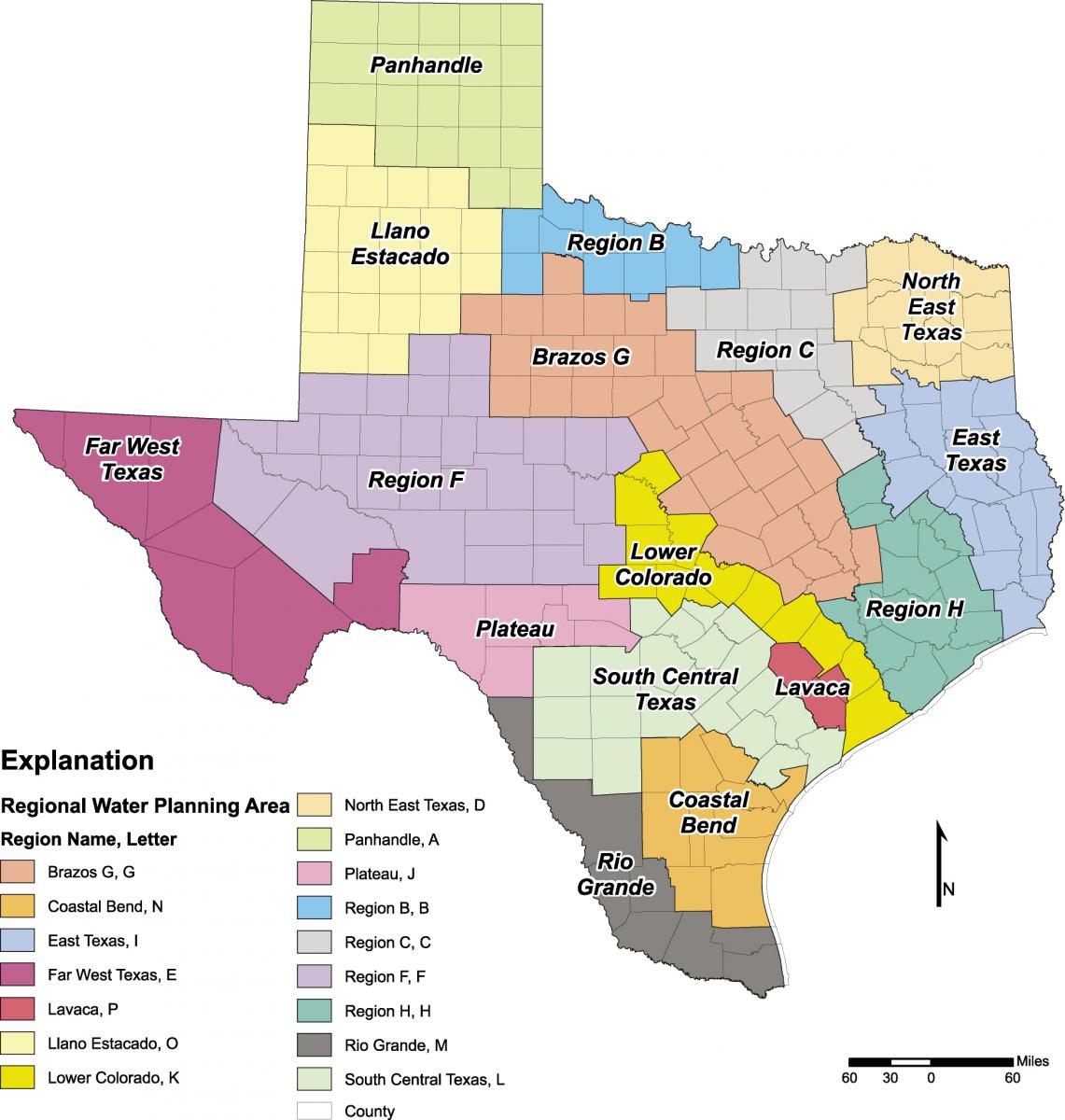Provide Input Now on Texas’ Regional Water Plans
Texas has one of the most resilient, diverse and innovative economies in the nation, and as a result the state also is experiencing some of the fastest population growth in the country. A reliable and sustainable water supply is absolutely critical to our state’s future. Fortunately, Texas has one of the longest-standing water planning processes in the nation and now is requesting public input on all 16 of its regional water plans.
Various deadlines for commenting on regional plans will be in April and May. Here is what you need to know about regional water planning in Texas and how you can make an impact on our water future:

What is Regional Water Planning?
In 1997, the Texas Legislature created a comprehensive water planning effort using a “bottom-up” approach. During each five-year planning cycle, all 16 regional water planning groups outline how various water users will conserve water, meet future water supply needs and respond to future droughts. The bottom-up approach allows local stakeholders to assess region specific risks and uncertainties and evaluate the potential impacts of water management strategies on their region as well as on the state’s water, agricultural and natural resources. These 16 regional water plans are rolled up into the State Water Plan.
How is Freese and Nichols Involved in Regional Planning?
Freese and Nichols has a long tradition of developing sustainable regional water resources, maximizing water conservation potential and leveraging nontraditional water sources in supply-limited environments. We have been involved in the regional water planning process since its inception, and we worked for the Texas Water Development Board on eight of the 16 2021 Regional Water Plans (Regions A, B, C, E, F, G, H and I).
How Can I Get Involved in Regional Planning?
The regional planning process is remarkably transparent, so please take advantage of the various opportunities to shape our water future:
- Attend one of the many Regional Water Planning Group meetings. Search the agendas.
- Read the draft Regional Water Plans and provide public comment directly to the Regional Water Planning Group by the appropriate deadline (different for each region but generally by April/May 2020).
- Attend the public hearings on the draft Regional Water Plans in April/May 2020. Here’s the schedule.
Heraclitus said, “No person ever steps into the same river twice, for it’s not the same river and they are not the same person.” This same sentiment applies to the adaptive management used in regional water planning. The 450+ people who serve on Regional Water Planning Groups across the state represent diverse interests, and the representatives change over time. However, these volunteers come with the goal of being the best stewards of the state’s most precious natural resource: water.


